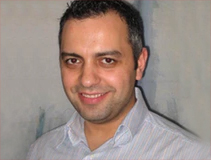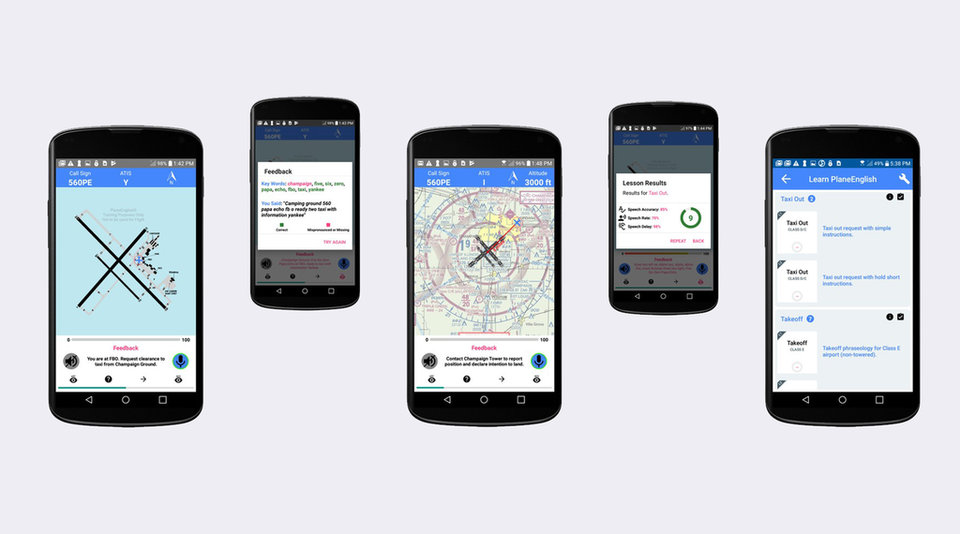Air Traffic Control
Speaking plane English: a new app is helping pilots and ATC communicate
Training opportunities for learning and mastering aviation radio communication can be expensive and few and far between. However, the creators of PlaneEnglish aim to provide an easier way for pilots to acquire radio communication skills. Frances Marcellin speaks to Muharrem Mane, president and co-founder of PlaneEnglish to find out more
When the Civil Aviation Authority released a report by Dr Barbara Clark in 2017 about the state of the English language in the aviation system, the most problematic exchanges were UK pilots misunderstanding non-UK Air Traffic Controllers (30%), and pilots misunderstanding UK Air Traffic Controllers (18%).
But both English and non-English pilots can find aviation radio communication challenging, with many considering aviation phraseology another language in itself.
Traditionally it has been difficult for pilots to practise aviation radio communication outside of the cockpit. But two specialists have created an app-based aviation simulator, called PlaneEnglish, to help pilots overcome this problem.
Muharrem Mane, a private pilot who has a PhD in aeronautical and astronautical engineering, and Eren Hadimioglu, a professional pilot with over 800 hours of flying experience (and an FCC restricted radio operator license) launched the app in August 2018 after ten intense months of development.
With a monthly subscription starting at $4.99, it is a way for aviation students to practise outside of the classroom at an affordable cost. It is currently available on Google Play, with an iOS version coming soon.
In this Q&A, president and co-founder Muharrem Mane explains why he believes it will help improve aviation communication.
Muharrem Mane, president and
co-founder of PlaneEnglish

Image courtesy of
Frances Marcellin: Can you describe the target audience for the app?
Muharrem Mane: Our initial target markets are student pilots pursuing a private pilot license and the flight schools that train them, as well as pilots pursuing IFR certification, commercial licenses, those pursuing re-certification or currency, and commercial pilots who do not fly international routes very frequently.
Any profession that has to do with airplanes is a potential customer, from ground crews, to dispatchers, to air traffic controllers.
We knew that flight schools would be one of our customers and having the ability to customise PlaneEnglish based on their needs would be a key feature to make it even more relevant to their training environment (from callsigns, to airport and runways, to practice area, to landmarks used for local navigation).

Image courtesy of PlaneEnglish
iBeacon technology will provide indoor directions, walking times to gates, lounge access and boarding alerts
Does it help native English-speaking pilots, as well as those who don’t speak English as their first language?
MM: I believe that both English and non-English speakers find aviation radio communication to be a challenge and a skill that requires training. Non-English speakers may have to learn some basics that English native speakers don’t, but aviation phraseology and radiotelephony is almost like a foreign language in and of itself.
Dr Julia Trippe’s work on this topic for example (A Prosodic Profile of Aviation English), provides ample evidence that proficiency in conversational English does not predict proficiency in aviation English. As she states, the aviation English vocabulary, the cadence, rhythm and intonation patterns used by air traffic controllers and experienced pilots make aviation English and radio communication appear quite different from conversational English.
Why do you feel that the app is so important for communication safety in the aviation industry?
MM: The purpose of PlaneEnglish is to provide pilots with an accessible, affordable and effective means to learn, practise, and gain experience in aviation phraseology and radiotelephony in order to acquire the critical aviation skill of radio communication.
English proficiency (ICAO Level 4 or even higher) is insufficient for effective radiotelephony communication. It is both practice and experience that are key factors in achieving radio communication proficiency. The app provides the means to gain experience outside of the cockpit.
We want PlaneEnglish to be the standard by which all pilots learn to communicate on the radio.
Can you provide some details about how you developed the app?
MM: It was developed with five main features in mind: situational awareness, challenge-response, feedback, variation and customisation.
We knew that in order to keep PlaneEnglish affordable we had to focus exclusively on communication and provide the pilot the necessary information to simulate radio communication, hence the numerous audio and visual pieces of information that provide the pilot with the situational awareness needed to communicate.
The dialogues between pilot and air traffic control and the ability for the pilot to initiate a dialogue and respond to ATC provide the radio-realism to expose pilots to near real-life scenarios while learning phraseology.
The ability to receive immediate feedback on performance (speech accuracy, speech rate, speech delay, etc) is a key aspect of learning and improving, and randomisation within the lessons and the scenarios is key to ensuring that the pilot experiences variation while learning.
iBeacon technology will provide indoor directions, walking times to gates, lounge access and boarding alerts
Why do you think there is a growing safety gap in aviation caused through miscommunication?
MM: Communication (radio communication in this case) is one of those things that can magnify the impact or consequences of other safety-related factors. If all is going well in a flight situation or if margins of error are large, miscommunications can be clarified and improved. Conversely, in high-stress situations, communication can worsen and lack of proficiency in communication can become an issue.
I believe that developing a “muscle memory” for radio communication is something that can greatly decrease the likelihood of miscommunication, especially in high stress situations.

Image courtesy of PlaneEnglish
How can PlaneEnglish help to develop this “muscle memory”?
MM: “Muscle memory” comes with practice and experience and we believe that the PlaneEnglish simulator is the means to gain that practice and experience outside of the cockpit.
We see the importance of effective radio communication skills as a progression. Pilots must become comfortable and confident communicating with air traffic control, learn to communicate complex information effectively, and achieve proficiency communicating efficiently so it becomes second nature.
How do pilots learn through the app?
MM: Pilots can learn standard aviation phraseology and radio communication procedures – they can practise what they learn and receive feedback to continue to improve.
The 40+ lessons (in all phases of flight) that PlaneEnglish provides guide pilots through all parts of communications that they are likely to encounter and do so in increasing levels of complexity.
iBeacon technology will provide indoor directions, walking times to gates, lounge access and boarding alerts
Why does this app makes it easier for pilots?
MM: PlaneEnglish provides pilots the combination of accessibility and feedback to create an active learning experience for them. The variations in scenarios provide the means to practise in realistic situations and enable pilots to gain radiotelephony experience outside of the cockpit.
They have the opportunity to listen and interact with ATC with information that they are expected to obtain while flying (their location, altitude, speed ATIS, callsigns, etc) and they can continue to train on their own time and as much as they need.
By making requests to ATC and responding to ATC using aviation phraseology and obtaining real time feedback on their radio performance, pilots can get accustomed to communication on the radio, can correct their mistakes and continue to practice and build that invaluable “muscle memory”.
What has the reaction been to the release of this app?
MM: We have been in touch with student pilots, flight schools and air traffic controllers throughout the development process. Each of them has been very positive and excited about what we are doing.
For student pilots, the feedback has been that PlaneEnglish provides an active learning experience that greatly improves on simple access to manuals, audio files, video, or listening on (and paying for) a transceiver to hear other pilots talk on the radio.

Image courtesy of PlaneEnglish
iBeacon technology will provide indoor directions, walking times to gates, lounge access and boarding alerts